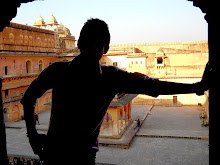Dance (from French danser, perhaps from Frankish) generally refers to movement of the body, usually rhythmic and to music,[1] used as a form of expression, social interaction or presented in a spiritual or performance setting.
Dance is also used to describe methods of non-verbal communication (see body language) between humans or animals (bee dance, patterns of behaviour such as a mating dance), motion in inanimate objects (the leaves danced in the wind), and certain musical forms or genres. In sports, gymnastics, figure skating and synchronized swimming are dance disciplines while martial arts kata are often compared to dances.
Definitions of what constitutes dance are dependent on social, cultural, aesthetic, artistic and moral constraints and range from functional movement (such as folk dance) to virtuoso techniques such as ballet. Dance can be participatory, social or performed for an audience. It can also be ceremonial, competitive or erotic. Dance movements may be without significance in themselves, such as in ballet or European folk dance, or have a gestural vocabulary/symbolic system as in many Asian dances. Dance can embody or express ideas, emotions or tell a story.
Dancing has evolved many styles. Breakdancing and Krumping are related to the hip hop culture. African dance is interpretive. Ballet, Ballroom, Waltz, and Tango are classical styles of dance while Square and the Electric Slide are forms of step dances.
Choreography is the art of creating dances, and the person who does this is called a choreographer.


No comments:
Post a Comment